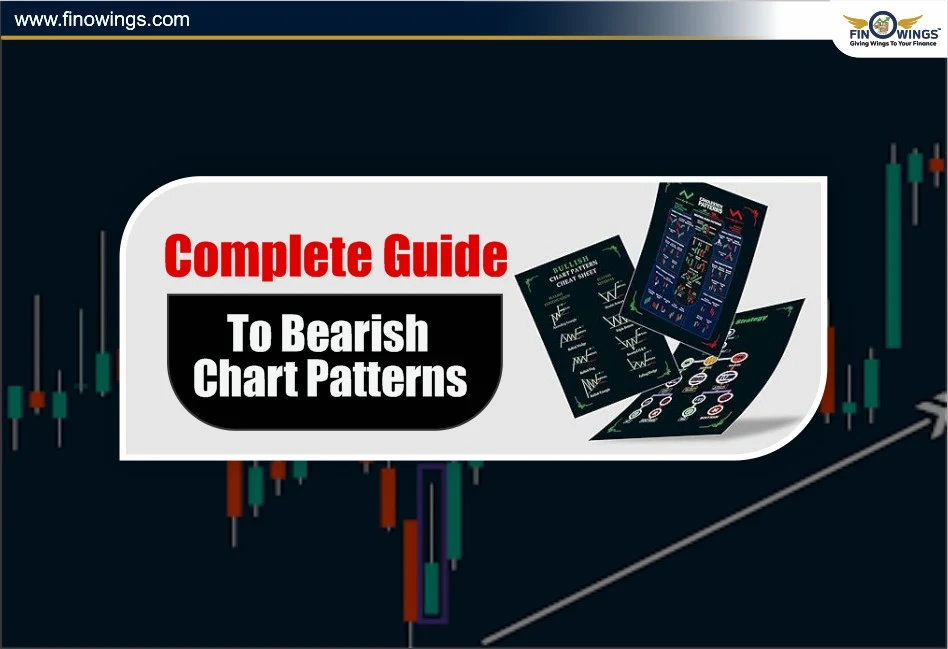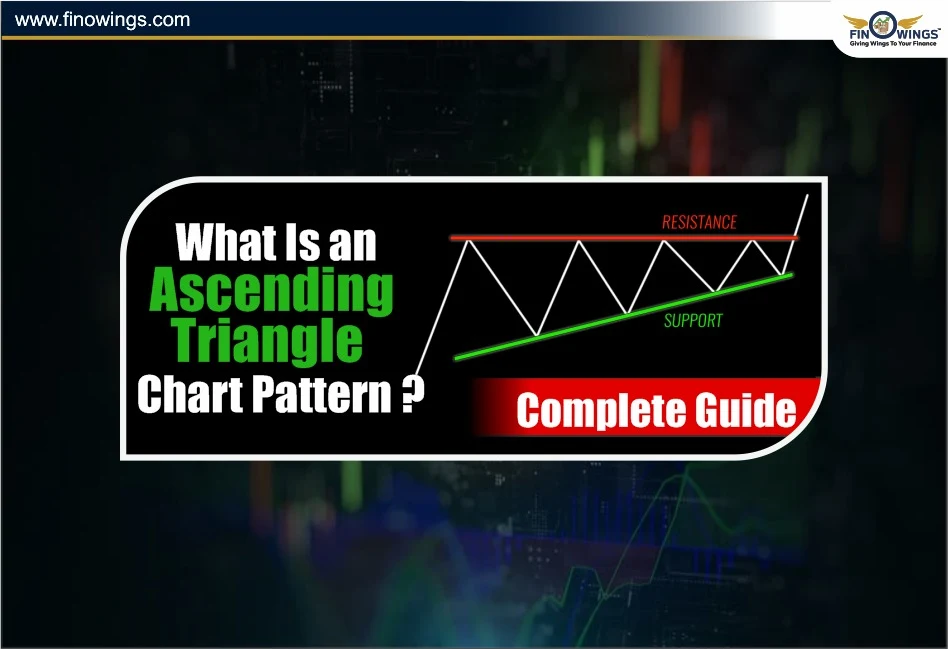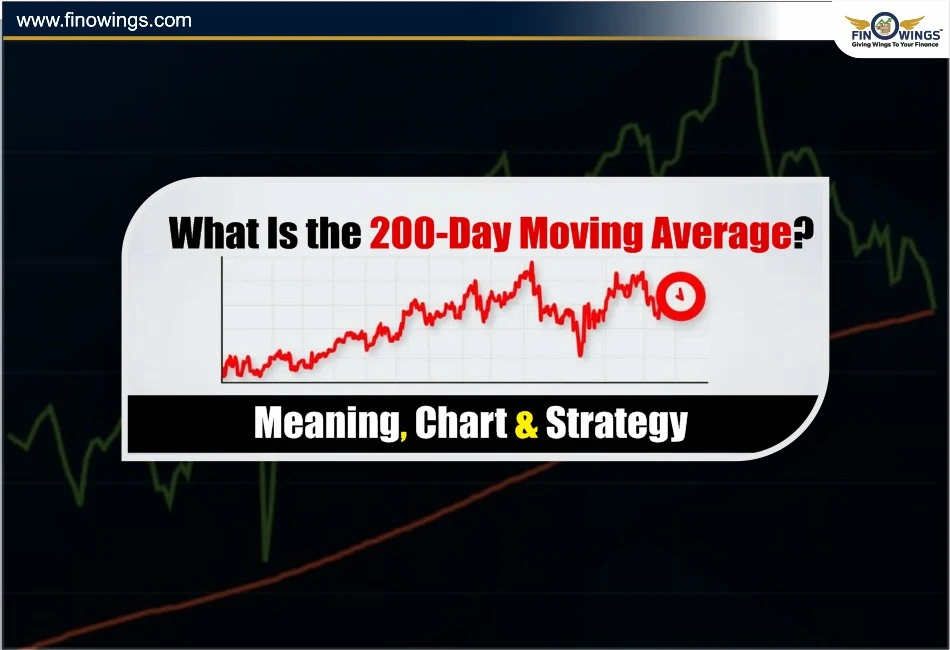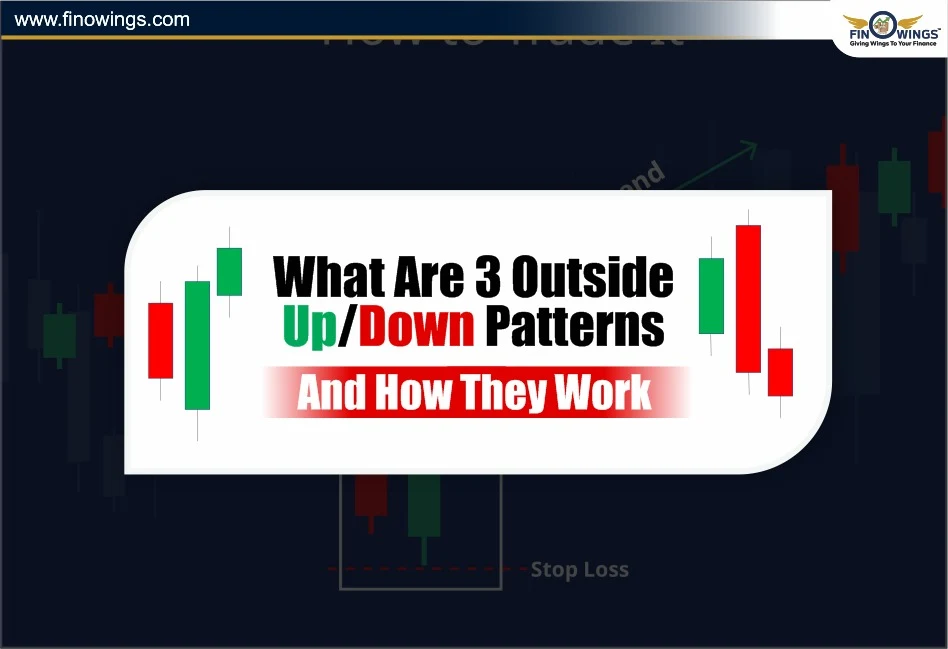Home >> Blog >> Complete Guide to Bearish Chart Patterns
Complete Guide to Bearish Chart Patterns

Table of Contents
Recognizing bearish patterns is essential for technical analysis and trading in order to defend profits and forecast reversals. Bearish patterns signify a bearish trend, which implies that the price is going to decline and that the sellers are in control.
Traders comprehend the formations, hedge the portfolio, start short positions, and exit at the right times. This complete guide will explore the most significant bearish chart patterns, how the patterns form, and how to apply them in trading.
What Are Bearish Chart Patterns?
Bearish patterns are formations in charts that indicate the price is about to reverse from a bullish (uptrend) to bearish (downtrend) and illustrate a new phase in the market. Sellers are about to take over the market, and buyers are weakened.
It can form in any timeframe. Those professionally trading in a bearish trend may be using 5-minute intraday charts, weekly, or even monthly charts. With confirming bearish patterns in weak trading volume, traders will know a price drop is likely to follow.
Why Bearish Patterns Matter
Failing to recognise bearish patterns can lead to unhedged positions and lost profits.
Here’s what bearish chart patterns can help you do:
-
Determine when an uptrend is likely to come to an end.
-
Confirm where to enter a short.
-
Generate an exit point for a long position.
-
Better loss management by finding the right stop loss level.
-
Bearish patterns suggest that the market is starting to shift from buyers to sellers.
Bearish Patterns Every Trader Should Recognise
1. Head and Shoulders Pattern
The head and shoulders pattern is widely known as a reversal signal and a pattern shift. It appears after a strong uptrend and suggests a potential slowdown.
Structure-
Left Shoulder- Price increases and then slightly decreases.
Head- Price increases even higher and creates a new peak then decreases again.
Right Shoulder- A lower peak is formed, then another decrease.
The neckline is drawn across the two lows and is the breakdown level. Once the price closes under the neckline with volume, a bearish trend is expected.
2. Double Top Pattern
A double top is a powerful bearish reversal pattern that forms after an extended rally.
Formation- Price reaches a resistance level 2 times. There is a trough in-between, and 2 peaks form at the same height. The pattern is confirmed when the price breaks below the trough.
Market Psychology- Buyers try and push prices higher 2 times. When sellers push the price down, the lower prices hold.
Result- A bearish trend, with volumes on breakdown increasing.
3. Rising Wedge Pattern
A rising wedge is a bearish continuation or reversal pattern, depending on where it appears.
Structure- Both the support and resistance lines slope up, but the support slope is steeper. When the price slams into the wedge, buying momentum weakens.
A bearish breakdown is confirmed when the price breaks below the lower trendline.
Key Insight- Rising wedges are often seen during market rallies and warn that a price correction or reversal is likely.
4. Bearish Flag Pattern
A bearish flag pattern forms after a sharp decline in prices. The prices consolidate sideways or upwards after the decline.
Structure- The first drop creates a “flagpole.”
A small upward channel (the flag) is formed as the price consolidates.
When the price breaks below the flag’s lower boundary, it continues the bearish trend.
Trading Strategy- Short below the breakout with a stop above the flag’s upper line.
Target- The flagpole's length.
5. Descending Triangle Pattern
The descending triangle pattern is the opposite of the ascending triangle. It's one of the most clear bearish patterns for traders.
Structure- A flat support line at the bottom.
A descending resistance line at the top connecting lower highs.
This indicates that although buyers are having a harder time keeping up the support, sellers are growing more assertive. The price breaking below the support with volume initiates a significant negative trend.
Example:
When a stock is trading between Rs. 200 (support) and Rs. 220 (lower highs), a breakdown below Rs. 200 indicates a short entry.
6. Evening Star Pattern
The evening star is a three candle reversal pattern that appears at the top of an uptrend.
Formation-
First Candle- Strong bullish candle.
Second Candle- Small indecisive candle (Doji or Spinning Top).
Third Candle- A long bearish candle that closes deep into the body of the first candle.
7. Shooting Star Pattern
The shooting star is a single candle bearish signal that is formed close to the top of the market.
Characteristics:
-
A small body at the lower end of the range.
-
Long upper shadow (indicating rejection of higher prices), and
-
Little to no lower shadow.
-
This shows that buyers had a weak pause on the upward momentum. When followed by a bearish candle, this signal will mark the start of a new correction.
How To Confirm A Bearish Trend
Seeing a pattern is not enough. To validate a bearish trend and to start trading, you will need to confirm the signal with one of the following methods:
1. Volume Confirmation- A breakdown that is greater than the average volume.
2. Moving Averages- The price is trading below the 50-day or 200-day MA.
3. RSI Indicator- Bearish momentum is confirmed with the RSI below 50.
4. Trendline Retest- Price will often retest the broken support after continuing down, which is great for re-entry.
Trading Tips for Bearish Patterns
-
Always wait for a confirmed breakdown before you start shorting. Stop-loss orders should be placed just above the closest resistance point or previous swing high.
-
Add momentum indicators like the RSI and MACD to the analysis for specific chart patterns.
-
You should not overleverage. In periods of high volatility, bearish trends can reverse quite rapidly, especially in cases of overleverage.
-
Look at overall market sentiment. Global indicators often shift the direction of stocks.
Common Errors by Traders
-
Entering before you confirm the required chart patterns.
-
Ignoring volume spikes. Volume spikes signal the validity of breakdowns.
-
Consolidation patterns and reversals are often confused.
-
Risk management is often overlooked in high volatility.
See our comprehensive article on Most Used Chart Patterns by Traders for more information on how to improve your technical analysis. Here, we describe the most dependable patterns that experts use to spot breakout and reversal possibilities.
Conclusion
By examining bearish chart patterns, traders can predict a market decline and protect their money. Important indicators that indicate a shift in emotion and the start of a negative trend are the double top, head and shoulders, and falling triangle patterns.
You must improve your volume analysis and employ additional indicators to position yourself for a profitable downturn in order to navigate market downtrends. Mastering bearish patterns converts a downturn into profit. It minimises losses and makes downtrends an opportunity.
DISCLAIMER: This blog is NOT any buy or sell recommendation. No investment or trading advice is given. The content is purely for educational and information purposes only. Always consult your eligible financial advisor for investment-related decisions.


















